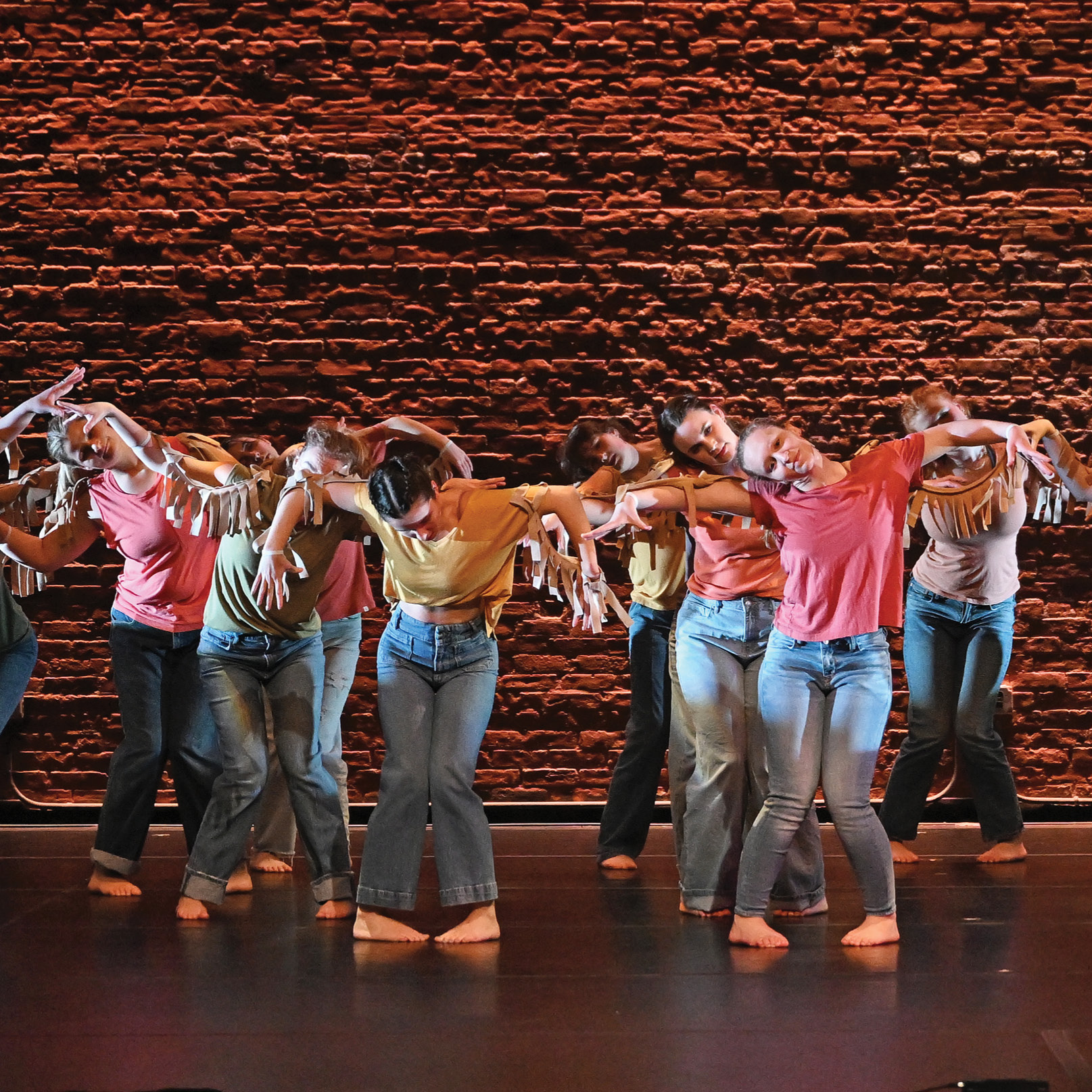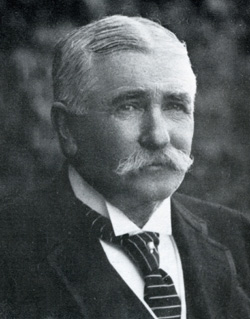
A History of Connecticut College: Morton Plant's Ride

The following is an excerpt from Gertrude E. Noyes' 1982 book, "A History of Connecticut College," copyright Connecticut College.
Most of the incorporators agreed to serve as trustees and met for the first time on May 1, 1911 in New Haven. Morton F. Plant was elected Chairman; Governor Simeon E. Baldwin, Acting Chairman, to function when Mr. Plant was away; Alfred H. Chappell, Treasurer; and Elizabeth C. Wright, Secretary. Other proven friends on the Board were: Colin S. Buell; representatives of the Hartford College club - Miss Partridge, Mrs. Mitchell, and Mrs. Frances S. Williams; Frank L. Palmer; Oliver Gildersleeve, who had offered his estate on the Connecticut River with a generous trust fund but who died before the College opened; Edwin Milner, who had given $10,000 toward the campaign; Edward D. Robbins, counsel for the New Haven Railroad, in whose office the first meeting was held; the Honorable Edwin L. Smith, Mayor of Hartford; Henry P. Wright, Ph.D., LL.D., recently retired Dean of Yale; and Mayor Bryan F. Mahan. Formidable tasks fell to the standing committee: Executive and Finance, Building, Endowment, Education, Publicity, and Library.
The immediate need, however, was for endowment, as the funds thus far collected would barely cover initial outlays for land and buildings. Some assurance of the survival of the institution was imperative, and the trustees set out to plan a statewide campaign. At the second Board meeting on June 3, 1911, however, to everyone's joy Mr. Plant announced his historic gift for endowment of one million dollars in securities, the income only to be available for "running expenses." The New London campaign had seemed something of a modern miracle, and here was another. Now the opening of the College with all the best facilities and staff was assured, and the trustees could turn to there their specific committee responsibilities. No wonder one reporter in his enthusiasm called Mr. Plant "the true founder of the College," and indeed without his generosity the College might have got off to a fine start only to founder soon after. In a more restrained mood The New London Telegraph paid Mr. Plant its succinct but fervent tribute: it pronounced his gift "the splendid act of a splendid man."
It is high time to identify Commodore Plant, as he was called locally. This vital and colorful man had built Branford House, the Gothic mansion at Eastern Point, Groton, which, through an odd turn of fortune, served as the center of two other educational institutions, the Coast Guard Training Station during World War II and now the Southeastern Branch of the University of Connecticut. Mr. Plant's father, Henry B. Plant, had made his fortune in transportation, real estate, and hotels during the "opening up of Florida." Morton Plant inherited those interests, controlled Plant Railroad Systems and the Plant Steamship Lines, and held many directorates. Though his office was in New York and he made frequent trips abroad, he was always loyal to his Connecticut background. He erected the Plant Building (Dewart Building) on State Street and replaced the old Fort Griswold House with the palatial Griswold Hotel, a popular rendezvous for yachtsmen located at the mouth of the harbor on the Groton side.
He was himself a royal sportsman. At various times he owned ten large yachts, participating in their design and winning trophies in international racing events. What brought him the special attention of New Londoners, however, was his fondness for baseball. He opened Plant Field, then considered "the best ball park in Connecticut," and held the New London franchise in the Eastern Baseball League. He took an active part in recruiting players, called "The Planters," and saw to it that they won their share of pennants. Obviously, Mr. Plant was not a schoolman or an academic type such as one might expect for the backer of a new college, but there was never any doubt of his respect for learning or his generosity toward capable young people and the Groton-New London area. To this day a portrait of the florid and jovial gentleman hangs in the college president's office, where he has cheered successive presidents through their daily rounded and beamed down, somewhat incongruously, on a never-ending series of academic meetings.
Such a character, like the heroes of epics, naturally attracted legends. According to one story, the morning after Mr. Plant's dramatic announcement found a reporter from The New London Telegraph waiting on his mansion steps for an interview. Mr. Plant, always shy of thanks, stated the facts briefly and then closed the interview abruptly by turning to his pet parrot and asking, "Polly, want a glass of port?" The account of Mr. Plant's transfer of the securities from his Hartford bank to the National Bank of Commerce in New London on September 8, 1911 is an amusing and well authenticated part of college history. It is best told by William J. Farnan, who as a young man was a chauffeur for the Plants and who later became a popular custodian first for the Auditorium and then Chapel at the College. Miss Wright in her scrapbook gives us the background: You must remember that there were no paved roads between here and Hartford in those days, and the dirt roads had great humps and ruts … So Mr. Plant required Mr. Farnan to drive the car [an open Fiat] very slowly because he suffered from gout and every bump on the road meant pain for him
Mr. Farnan's own account of the famous trip follows: We left Branford House at Avery Point about nine o'clock in that morning, stopping at the bank in New London, where two gentlemen joined us. The day was gray and chilly, and none of us felt like the long drive to Hartford, even for a million dollars. Nevertheless, we arrived in Hartford … and went to the Hartford Club, where Mr. Plant and party had lunch, and then we went to the Connecticut Trust Company. Mr. Plant went into the bank alone, leaving his party in the car, and stayed about thirty-five minutes. Then he reappeared with two men dressed in grey uniforms. One had a small bag. 'Well,' I thought, 'we will have some protection going home' - but I found that our protection was to end right there on the sidewalk. Well, we left the Trust Company at 2:35 by the clock on Main Street and started for New London via Middleton and Saybrook, the best route in those days; but the road was very bad and it was long after four when we arrived in Saybrook, and Mr. Plant decided to stop at the Saybrook Inn and rest a while. So he went into the Inn, and Mr. Chapman, the proprietor, who was a friend or Mr. Plant's, insisted that they wait to have something to eat. I couldn't eat; so the bag was left with me. I sure couldn't eat then. That was the longest meal, I think, I ever waited through for Mr. Plant. All I did was to sit there and worry as the shadows started to creep around and I hadn't even a closed car for protection. Mr. Plant meanwhile called up the bank in New London and asked Mr. Prest to wait until he got there, as he wanted the million put into the safe right away. Well, we finally got started from the Inn and, after what seemed to me an age, we arrived at the bank. There were quite a few people on the sidewalk, and as we drove up, they began to cheer. I think that Mr. Prest must have told someone confidentially that we had the start of the College with us in that little bag. And so ended our trip from Hartford that made Connecticut College.
As a postscript, we learn from other "reliable sources" that the bag contained "two bundles of securities, each the size of a Webster's Unabridged Dictionary" and that among the securities were unclipped coupons to the value of several thousand dollars - a welcome bonus! It was also Mr. Plant who was ultimately responsible for the naming of the College. In the earliest days it had seemed natural to call the College Winthrop College in honor of the distinguished neighbor of colonial times, John Winthrop, Jr., founder of the city, governor of the Colony, and a man of no mean learning. When it was recalled, however, that Winthrop College, South Carolina, also for women, had preempted the name, the College was charter Thames College instead. Described as one of the most liberal ever granted, that charter gave the College all the privileges extended to Yale more than two hundred years earlier: "exemption from taxation and all other privileges and exemptions now enjoyed by or hereafter granted to Yale University." Thames College, however, was thought to have provincial implications; and in July, at the insistence of Mr. Plant, the name was changed to Connecticut College for Women. Actually Mr. Plant had suggested "For Females," a designation common at the time and apparently not considered derogatory, but happily induced to accept "For Women" instead.
February 11, 2011
